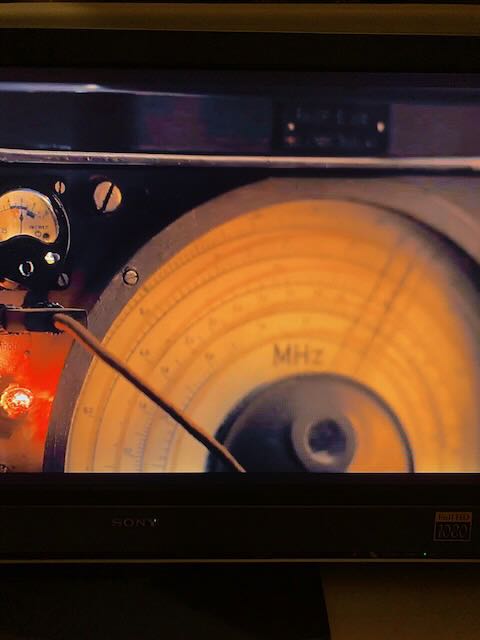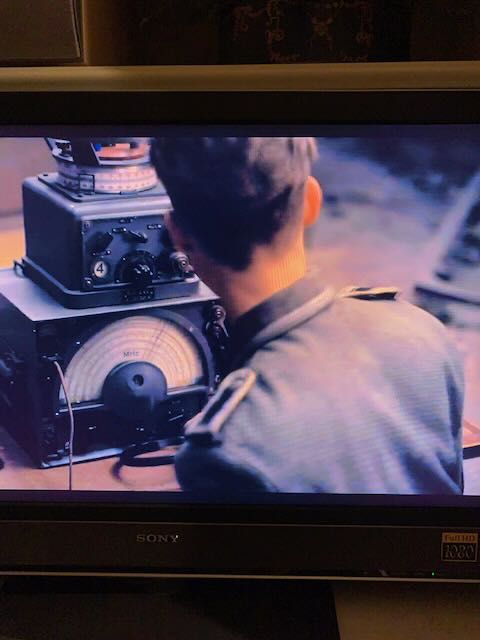 Many thanks to a number of readers who have noted that All The Light We Cannot See is now on Netflix. You may recall, we’re quite big fans of the book which has a strong radio theme.
Many thanks to a number of readers who have noted that All The Light We Cannot See is now on Netflix. You may recall, we’re quite big fans of the book which has a strong radio theme.
Many thanks to SWLing Post contributor, Jake Brodsky who notes:
Heads up: Netflix is serializing a story that centers around SW radio
during WWII in occupied France.
Here’s the IMDB reference https://www.imdb.com/title/tt15320362/
And I’ve just seen the first episode. Aside from some inevitable
anachronisms such as a dial that looks a lot like that of a signal
generator and a dial measured in MHz (That designation didn’t come
until the 1960s) It’s a good story and VERY radio centric.
More detail from Netflix can be found at
https://www.netflix.com/tudum/articles/all-the-light-we-cannot-see-cast
Also, SWLing Post contributor, Les Polt, notes a few of the radio quirks he found in the series:
This series on Netflix, based on a best-selling novel, shows a German officer listening to an illegal Resistance broadcast on his short wave receiver in occupied France during WWII. The receiver dial clearly is marked “MHz”, which was not adopted until 1970. I also heard a character referring to a “transceiver”, a term not in use that far back.
I’d be curious to identify the receiver.
This screenshot also shows a radio direction finder, presumably of German World War II vintage.
Many thanks, Les, for the screenshots and notes! I, too, and curious if anyone can ID that dial–perhaps it’s just a set mark up?
If you haven’t yet, I highly recommend reading the book by Anthony Doerr upon which this series is based. It’s superb, especially if you love WWII history and radio. Check it out on Amazon (affiliate link).



There is also a mistake with the radioset what the girl used in her bedroom & travel.
This is a philips 208u from 1945 /1946.
Even on the dial are the words : herrijzend nederland visable. This words where edit to the dail after the world war.
The equipment shown in the series may look like this :
Fu.NP.E a/c is a radio direction finder antenna with amplifier and bandpassfilter.
Frequency range is from 0.19 to 25 MHz. Receiver used with the antenna was Fu.H.E.u1.
Fu.NP.E a/c was used both in air and ground operations. (LA6NCA)
https://yctlyfdb.artstation.com/projects/3dm6ro
The receiver is a Hagenuk Fu. He. u1 Direction Finding Receiver, an actual direction finding receiver developed jointly between Hagenuk and Telefunken. It turns out that the receiver dial was originally labeled as MHz in 1943 and not MC. While the International System of Units which specified MHz for the measurement of radio frequency wasn’t broadly adopted until 1970, MHz was in fact in use prior to 1970. It was far less common, but this is not a goof on the prop department’s part.
However, the prop department DID add the red ‘reception’ indicator light to the front panel, which the Fu He u1 did not have. It was placed on the front panel where the crystal callibrator is located.
I really enjoyed this series/ movie. While watching it I commented to my wife, “they didn’t use Mhz. back then, they used Mc.” Looking at some of the old WW2 German radio gear, they obviously did. I guess that’s because physicist Heinrich Hertz came up with the “Hertz” frequency designation. I stand corrected. 😉
https://en.wikipedia.org/wiki/Heinrich_Hertz
I’m interested in the transmitter receiver combo used in the show, it’s a thing of beauty -love the knife switches: https://imgur.com/a/uy4ebx0
Not sure if it might be just something mocked up by a prop department?
This is a German KwEa HF receiver. There seem to be other receivers with similar indentification letters, for which information is plentiful. I have found photos of this one, which covers 0.75 to 25 MHz, but have not found a schematic of specification for it yet.
A correction to my previous post; after some more digging, this is a portable German Fu.H.E.u1 receiver that was used for monitoring and intercepting enemy transmissions.
There are excellent photos and additinal information here on LA6NCA’s excellent web site:
https://www.la6nca.net/tysk/fuhev/index.htm
The series is somewhat disappointing compared with the book, but still worth viewing. 1310 khz is described throughout the series as being shortwave. But it’s nice to have yet another show with a radio connection.
I watched the series, too. I wonder if 13 10 is meters. 13.10 meters is around 22.9 MHz.
It could be a shorthand way of saying “thirteen dot ten megacycles” (13.1Mhz). It might even make sense to some people at the time who had little experience with decimals, and were looking at those analogue bandspread dials.